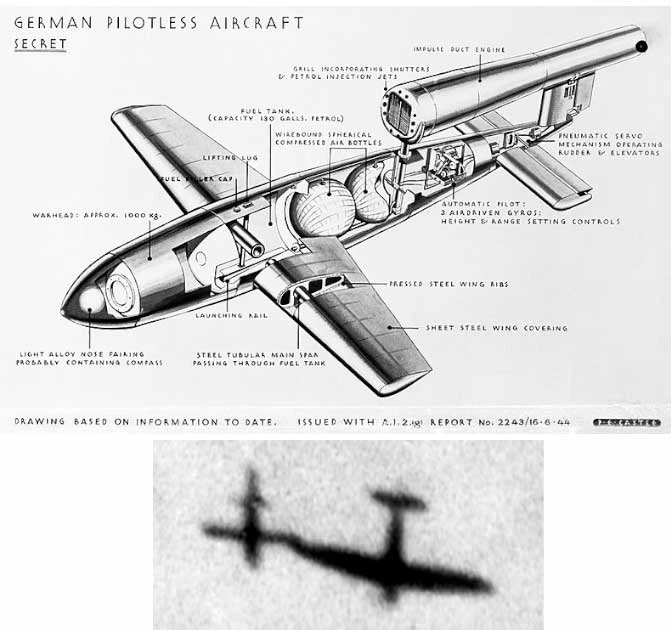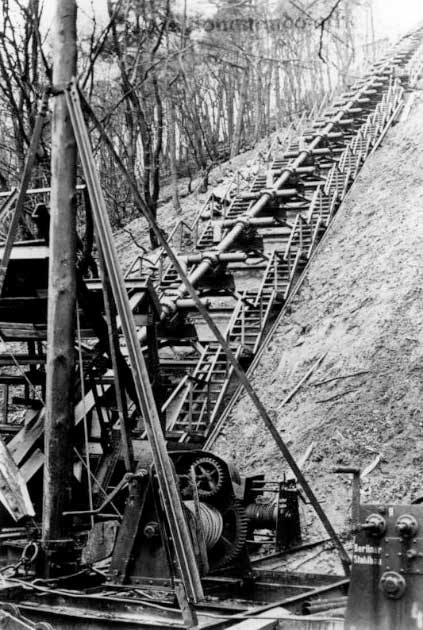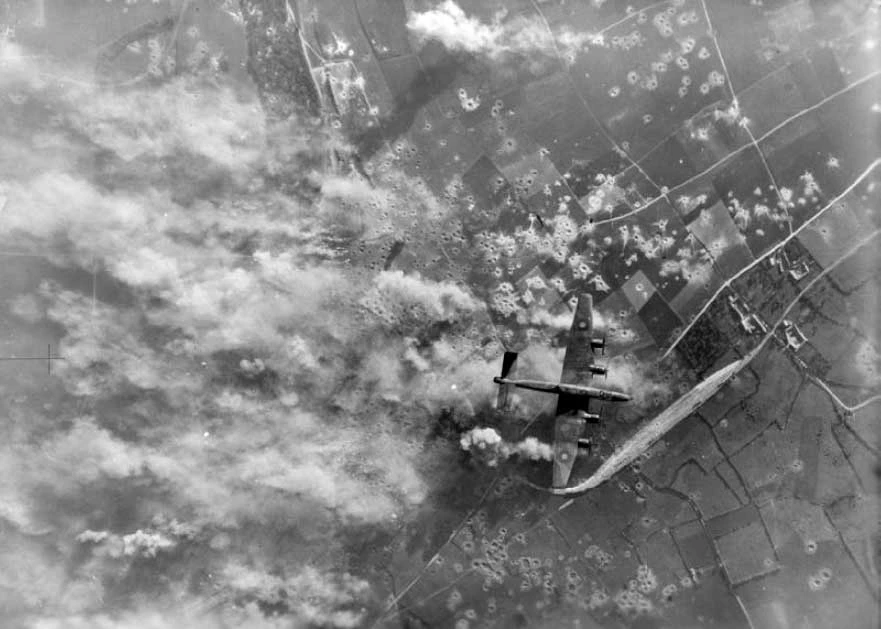by Lauren DillonJune 22, 2022
During World War II, Hitler’s search for decisive victory led the Nazis to build “Wunderwaffen” or “Super Weapons.” It was believed that these weapons would help crush the Allied Forces and lead to German victory in Europe.
Many of these weapons were never constructed or moved past the prototype phase; a few were created with varying levels of success. One weapon was designed to turn cities into rubble and ash. This weapon was the V-3 Cannon and had it been completed, the war’s outcome would have been very different.
Vergeltungswaffes
In 1944 and 1945, the Nazis built Vergeltungwaffes or “Vengeance Weapons” to obliterate London, and take Britain out of the war. The V-weapons were a series of long-range weapons designed for targeted and aerial bombings of cities. Of the three models created, only the V-1 and V-2 weapons were used in the war.
The V-1 weapon was a pulsejet-powered cruise missile (essentially a pilotless plane stuffed with high explosive) and was considered a very rudimentary flying bomb. The first V-1 missiles struck London on June 13, 1944, and were met with mixed results.
The British quickly learned how to take the missiles out before they hit, the Spitfire pilots realizing they could cause the slow missiles to crash simply by whacking them with the wings of their aircraft. However, the V-1 still caused the deaths of 6,184 civilians and destroyed parts of the capital, as London endured the firestorms of the Blitz.
The Nazis, seeking to learn from the failures of the V-1 missiles, built the V-2 missile. The V-2 was radically different, a rocket-fueled missile that, being much faster and flying much higher than the V-1, was almost impossible to intercept in this way. The V-2 was more advanced than V-1 and launched towards London on September 8, 1944, from a site in the Hague in Holland.

The V-1 Flying Bomb could be forced to crash by Spitfire pilots “tipping” it with their wings (Royal Air Force / Public Domain; UK Government / Public Domain)
V-2s were far more difficult for the British to bring down than their V-1 siblings. V-2s were able to cause significantly more structural damage than V-1s but far fewer were launched, and as a result this much more dangerous weapon ultimately killed fewer people.
The V-2s were also plagued with reliability problems, and some missing their target and others failing to explode at all. An unexploded V-2, stripped of all dangerous components, remains on display to this day on Tooley Street, outside London Bridge station.
The V-3 Cannon
The final Vengeance weapon was a secret weapon the Nazis began building, designed to destroy a war-torn London completely. To disguise what was being built, V-3 went by the code name “Hochdruckpumpe” (High-Pressure Pump) or HDP for short. But this was only a front: the V-3 was not a pump at all but rather a large-caliber cannon.
Unlike earlier V weapons which launched under their own power, the V-3 was powered by secondary propellant charges. When the projectile moved through the cannon’s barrel, it would trigger small secondary boosters to explode. These secondary explosions would force the missile to move faster and reach farther distances.
These secondary charges of solid rocket fuel were placed in pairs on each side of the barrel and looked like the legs of a millipede. The cannons themselves were massive, measuring 430ft (130m) in length, and were designed to be incredibly fast. The secondary propellants would help fire the missile at 4.900 feet per second (1.49m/s), firing 600 rounds of projectiles per hour.
London could not hope to survive against such a bombardment.
The Fortress of Mimoyecques
Due to the sheer size of one V-3 cannon, finding the right location with space to build these weapons were crucial to their success. The cannon also needed to be within striking distance of London, and the best locations for this were in northern France.
The Nazis therefore began building an underground military complex and fortress in secret, located in Mimoyecques in the Pas-de-Calais region of France. This location would allow the missiles to be fired from France, across the English Channel, and strike London without warning.
The Fortress of Mimoyecques was a network of sloped tunnels known as “drifts”, built into and under a chalk hill by prisoners used as slave labor. Hitler initially demanded 50 V-3 cannons to be made at the site, but as the project progressed this was reduced to 25 cannons.
But the concept at this point was unproven, and needed testing. A V-3 cannon prototype was therefore created at a secret location in the northwestern area of Poland, near the city of Międzyzdroje. This tests did not go well, and the crew faced many challenges.
One issue was that the paired multi-charge devices were hard to synchronize or work properly. Another problem was the difficulty in producing shells/projectiles for the gun. These were hard to design, and six companies tried to build a perfect missile, but the charge the shells could carry was small and lacked stability.

The prototype cannon in Poland. The rows of charges can be seen crossing the barrel (Bundesarchiv / CC BY-SA 3.0 de)
Engineering and military experts frequently told Hitler that the cannons would not work as expected. During the test runs, problems with charge synchronization resulted in the velocity of the shells being only 50% of what was needed to strike London successfully.
Eight rounds were fired, and the most successful shell traveled only 58 miles (93km). The tests also ended suddenly when the prototype cannon exploded. However, even when confronted with expert opinions, Hitler would not listen and pushed the V-3 project along, although the number of “drifts” planned for the active site was reduced from ten to three due to these poor results.
Beyond its poor performance, many thought the V-3 cannon was taking too much time, money, and manpower. An engineer who worked on V-3 said, “The actual project itself seems not to be scientifically perfect, and its development has not been sufficiently long. The workers are wasting a lot of time on the site….”
The construction was slow, and the project was at risk of not being completed in time to affect the in-going war. When allied forces stormed the beach at Normandy, the Nazis were worried. Mimoyecques was several miles up the coast from where the Allies landed and it was only a matter of time before the Allies arrived.
The Fate of the V-3 Cannon
A specialized photographic surveillance unit of the Royal Air Force (RAF) had by this time already noticed something was happening at Mimoyecques. The construction of a railway that led to tunnel entrances stirred suspicion. The allies had no clue as to what was being built. They assumed and believed that whatever the Nazis were building was related to firing more V-2 missiles at London.
Nevertheless this was clearly a priority target for the Allied advance and in November 1943, Allied attacks began at the fortress, with over 4,000 tons of aerial bombs were dropped at the V-3 site. Very little damage was done due to the solid bunker construction of the site, but workers were forced to leave the area during the bombings.
Faced with limited success, the Allies redoubled their efforts and on July 6, 1944, the RAF launched a second attack on the mystery construction zone. The 617 “Dambuster” squadron dropped eight Tallboy bombs onto the fortress.

Mimoyecques under bombardment, 6 July 1944 (Royal Air Force / Public Domain)
Tallboy bombs, also known as deep penetration bombs, weighed five tons (4.5 tonnes) and had the ability to cause earthquakes. The Tallboys caused a drift to collapse which buried over 300 workers alive. Because much of the V-3 cannon was underground, the allies didn’t know how much damage the Tallboys caused and kept attacking the site.
The U.S Navy and Airforce decided to also send two kamikaze “drones” at Mimoyecques as part of operations Aphrodite and Anvil. These drones required a pilot to take a plane up to cruising altitude and turn on auto-pilot before bailing out of the plane. A second plane would then take over control of the crewless plane, using radio and tv-guided technology to control it to its destination.
Ultimately, the fortress was deemed a failure, and the large V-3 weapons were abandoned: London was saved. Had the V-3 cannons been completed, and had they worked as intended, they would have destroyed London and likely been used on other large cities across Europe and potentially even America.
Two smaller versions of a V-3 cannon were however brought into operation, being used to strike Luxemburg during the famous Battle of the Bulge. These V-3 cannons fired 183 rounds in total, with 142 of them striking Luxemburg causing ten deaths and wounding 35 people. Hitler’s last Super Weapon, the V-3 cannon proved to be anything but super.
Top Image: The Nazi V-3 Cannon, hidden in its fortress bunker at Mimoyecques. Source: TRB Sanders / Public Domain.
By Lauren Dillon
Leave a comment